David Dubrow's Blog, page 10
November 15, 2018
Appalling Stories 2 Excerpt: Her Bodies, Her Choice
Appalling Stories 2, sequel to Appalling Stories: 13 Tales of Social Injustice, will be released in December of 2018. What follows is a sneak peek at the short story Her Bodies, Her Choice.
—
Hey, it’s me. Don’t turn it off! Just…just hear me out.
My notes are written on legal pads and spiral notebooks. I did everything offline. I’ll let you know where I hid the original copies at the end of this video, but don’t just click to the end, okay? Watch the whole thing first. Do this for me. I know you hate me and think I’m a bitch and I don’t blame you, but please. Please. I can’t trust my parents. They’re probably part of this.
It sounds crazy and over-dramatic like…like in a movie, but the only reason you’re watching this is because I’m dead. It means they got me. My former friends and colleagues. If you’d seen my phone…I had writers from The Atlantic to The New York Times who’d take my calls on the first ring. Me. Not even 27 years old and people with bylines in The Daily Beast and The New Yorker knew my name. I was kind of a big shot. But one of them ratted me out for bringing them the story of the century. The millennium. Probably all of them did.
So yeah, I’m dead. It scares the hell out of me, but—
You know what? Forget it. I don’t know if you’re happy I’m dead or what. Maybe you are. I broke your heart, after all. I regret that. Not ending the engagement. Just hurting you. You didn’t deserve that. But I saw your wedding pictures on Instagram like two years after we split up, so I guess you weren’t too, well, broken up about it. She’s pretty. You two look happy.
—
I guess if you hadn’t broken things off with me for taking care of our little…indiscretion, I’d’ve split up with you. It makes sense now, but back then I just felt hurt. With a degree in Women’s Studies from Vassar, pretty much the only option I had after graduation was VP of HR at a Nestle subsidiary while you saved the world one hedge fund at a time. But not long after you proposed, my senior adviser introduced me to some friends of hers, who introduced me to some friends of theirs, and, well, I could either follow your plan for us, or my plan for me.
So I went with me. The abortion and your throwing me out of your life over it was just the icing on the cake. But it launched me into my new career.
I started as an intern. Paying my dues. It sucked because I had to keep asking my parents for money to afford rent and food, but I learned a lot that first year. At Planned Parenthood you can’t claim that sexism in the workplace is keeping you from earning a living wage. I think they were monitoring me. Seeing how committed I was, how hard I’d work. After burning my bridges with you I had nothing else to do, so I threw myself into it.
—
Stay tuned for more information on Appalling Stories 2: More Appalling Tales of Social Injustice!







November 7, 2018
Thomas Covenant: The First Two Trilogies
A few weeks ago I plunged into a blast from the past: Lord Foul’s Bane, the first novel in The Chronicles of Thomas Covenant series by Stephen R. Donaldson. Between now and then I re-read the entire series. All ten books. I’ll admit that my interest flagged a bit by the last novel, but I enjoyed the experience and probably won’t repeat it any time soon.
 Donaldson has characterized the series as a Jungian tale of swords and sorcery: first you defeat your enemy, then your enemy defeats you, then you become him. In the first trilogy, Thomas Covenant, the least-likely protagonist in fantasy fiction, defeats Lord Foul the Despiser because of his leprosy: there’s no horror that Foul can inflict on him that he hasn’t already experienced, no amount of loathing the Despiser can heap on him that he hasn’t already inflicted on himself. His numbness, impotence, and self-hatred became his armor, and his wedding ring, which he still wore despite his wife’s divorcing him for being a leper, became a talisman of incredible power. In the final pages of The Power That Preserves, the third book in the trilogy, Donaldson ends the question of whether or not Covenant has imagined his experiences by having the Land’s Creator save his life in the so-called “real” world. Covenant has conquered his demons, saved something larger than himself, and developed some integrity along the way. He learned how to forgive and accept forgiveness. Cowardice is no longer an option in his life. Alienation isn’t something he has to embrace. His travails, one would assume, are over. He’s defeated his enemy.
Donaldson has characterized the series as a Jungian tale of swords and sorcery: first you defeat your enemy, then your enemy defeats you, then you become him. In the first trilogy, Thomas Covenant, the least-likely protagonist in fantasy fiction, defeats Lord Foul the Despiser because of his leprosy: there’s no horror that Foul can inflict on him that he hasn’t already experienced, no amount of loathing the Despiser can heap on him that he hasn’t already inflicted on himself. His numbness, impotence, and self-hatred became his armor, and his wedding ring, which he still wore despite his wife’s divorcing him for being a leper, became a talisman of incredible power. In the final pages of The Power That Preserves, the third book in the trilogy, Donaldson ends the question of whether or not Covenant has imagined his experiences by having the Land’s Creator save his life in the so-called “real” world. Covenant has conquered his demons, saved something larger than himself, and developed some integrity along the way. He learned how to forgive and accept forgiveness. Cowardice is no longer an option in his life. Alienation isn’t something he has to embrace. His travails, one would assume, are over. He’s defeated his enemy.
Except he hasn’t. Not really. In The Second Chronicles of Thomas Covenant, Covenant is stabbed in the real world to save his estranged wife’s life and, instants later, returns to the Land with a companion: an emotionally-damaged doctor named Linden Avery, who becomes a co-protagonist in the series. In the first book, The Wounded Land, we learn that Lord Foul has recovered from the injury done to him by Covenant, and has altered the Land in horrific ways. Instead of the natural cycle of the seasons, the Land goes through rapid successions of drought, pestilence, torrential rain, and accelerated fecundity. If the Land’s independent existence was proven in the first trilogy, in this second trilogy we learn, however obliquely, that the Land’s fate and condition nevertheless hinge upon the subconscious of people like Covenant and Linden. The Land’s plight is an echo of Linden’s injured psyche. The second book, The One Tree, is arguably the best in the series, not least because it takes us far away from the Land to see other cultures, other strange beings. Here, Linden finds that, like all of us, she’s capable of both terrible evil and selfless acts of healing, which sets her on the road to becoming a whole person. The plot reverses the standard fantasy trope of a quest to save the world, because in the end they fail (or think that they failed), and everything turns out wrong. By the time they return to the Land in the third book, White Gold Wielder, Covenant has a plan, and executes it. What makes this interesting in a meta-sense is that the conflict in the book doesn’t arise from Covenant’s plan failing, or even coming close to failure: it’s that Linden is afraid of what will happen if he succeeds. Pleasantly for everyone involved, Covenant does succeed, and even though Foul kills him, Foul is subsequently defeated and Linden heals both herself and the Land. Linden’s tragic, awful history doesn’t have to define her. She can love and accept love, she can be vulnerable without being killed.
I’ll wrap up this analysis of the Thomas Covenant series another time, and will address the Last Chronicles then.







October 31, 2018
Cannibal Holocaust: My Take
In the wake of a relatively recent post where I discussed the made-in-2000 movie Battle Royale, I figured I’d go deeper into horror’s cinematic past and talk about the notorious 1980 film Cannibal Holocaust.
 Very much a movie before its time, Cannibal Holocaust describes the trek of an American anthropologist (porn actor Robert Kerman, complete with porn ‘stache) into the South American jungle to find out what happened to a documentary film crew that had gone missing on their search for primitive cannibal tribes. After various adventures, the anthropologist finds the film crew’s movie reels, which show their unbelievably disgusting exploits and horrific fate. So it’s an early found-footage horror film, and movies like The Blair Witch Project (plus countless others) owe something to it in style, if not theme.
Very much a movie before its time, Cannibal Holocaust describes the trek of an American anthropologist (porn actor Robert Kerman, complete with porn ‘stache) into the South American jungle to find out what happened to a documentary film crew that had gone missing on their search for primitive cannibal tribes. After various adventures, the anthropologist finds the film crew’s movie reels, which show their unbelievably disgusting exploits and horrific fate. So it’s an early found-footage horror film, and movies like The Blair Witch Project (plus countless others) owe something to it in style, if not theme.
There’s no question that Cannibal Holocaust‘s overarching theme is media manipulation: documentary makers and news crews have a tendency to, if they can’t find footage to make their predetermined point, create the footage (or creatively edit it to fit the narrative they’re looking to develop). Viewers familiar with Michael Moore’s Bowling for Columbine and Al Gore’s An Inconvenient Truth will understand how unscrupulous filmmakers produce fiction and call it fact. In Cannibal Holocaust, the documentary film crew burns a tribal hut down (with the villagers in it) to tell the false story that this tribe was at war with another tribe. Later, and more disturbingly, they rape a young village girl and then impale her on a wooden stake to create the false impression that the tribe killed her for being impure. So when the tribe finally rises up to take their awful revenge, it’s almost a relief for the viewer. Almost.
Cannibal Holocaust‘s filmmakers killed a number of animals on-screen, including a pig, a turtle, a couple of monkeys, a snake, a tarantula, and a coatimundi. That was horrible and disgusting. I’d seen Bear Grylls murder a turtle on one of his shows years ago, but the movie’s turtle-disemboweling scene was unbelievably bloody and hard to watch. I felt awful for the little pig and the monkeys. They didn’t deserve that. But it worked. The graphic and real animal-killing scenes made you want to believe that the later human-killing scenes were real instead of staged.
You need a strong stomach to watch this film, so it’s not for everybody. I’m not even sure it was for me. But it’s effective. By now, the movie’s notoriety precedes it: my guts started knotting the moment the opening credits rolled. Still, it has weaknesses: the voices were horribly dubbed, the ending was a bit too pat, and the message was lost from time to time in a welter of pig guts and fake blood.
It’s still relevant, particularly today. There’s a reason why many, many films were patterned after it.







October 26, 2018
Flash Fiction Writing Contest!
On Tuesday, October 23, The New York Times published short stories focusing on the end of the Trump-Russia investigation, and one of the more notable (if poorly-written) tales involved a U.S. Secret Service agent helping a Russian spy assassinate President Trump.
In the wake of the recent scare involving unexploded bombs sent to prominent progressives, CNN, one of the progressive targets, blamed Trump for inciting the bomber.
What’s clear is that these two seething cauldrons of progressive bile masquerading as news outlets are using their bully pulpits to destroy a president they disagree with. This is unacceptable, no matter who you voted for.
It’s time to not just fight back, but write back. To that end, publisher Obsidian Point is sponsoring a flash fiction writing contest. In 1,000 words or less, tell us a story that describes the downfall of NYT, CNN, or both. We want to see, in writing, “Dear Diary” Jim Acosta get his comeuppance. What would make Don Lemon’s self-satisfied smirk vanish? What fake news story would finally get the failing New York Times to shut its doors? Which scandal would befall the ancient-but-still-twitching Maureen Dowd?
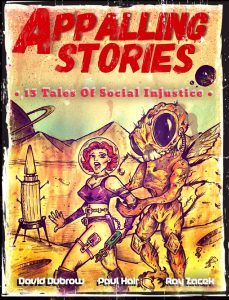 We’re not looking for assassination porn; let the amoral progressives at The New York Times publish those kinds of masturbatory fantasies. Any genre is welcome, from horror to comedy to science fiction to thriller to whatever. Make us laugh, make us cringe, make us throw up all over ourselves. But make it good.
We’re not looking for assassination porn; let the amoral progressives at The New York Times publish those kinds of masturbatory fantasies. Any genre is welcome, from horror to comedy to science fiction to thriller to whatever. Make us laugh, make us cringe, make us throw up all over ourselves. But make it good.
Send your story to appallingstories@gmail.com in any format that can be opened with Microsoft Word. Remember, 1,000 words or less. Deadline is Sunday, November 4. One story per writer.
The winning story will receive a Chick-Fil-A gift certificate and will be published in the upcoming anthology Appalling Stories 2: More Appalling Tales of Social Injustice, the sequel to the top-selling Appalling Stories: 13 Tales of Social Injustice. Runners-up will be published online in this space.







October 24, 2018
The Armageddon Series: The Rest of the Story
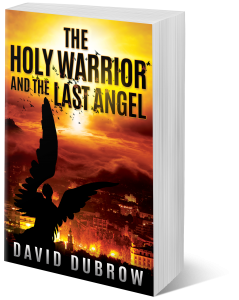 I started writing the Armageddon trilogy in early 2013, with the outline of The Blessed Man and the Witch. My intent was to follow the original Star Wars trilogy style: set up the overarching concern in the first volume (in this case, the end of the world), have the main characters try and fail to overcome this concern in the second volume (The Nephilim and the False Prophet), and then complete the story of good versus evil in the third volume, The Holy Warrior and the Last Angel. So it’s taken me close to six years to write and publish all three books.
I started writing the Armageddon trilogy in early 2013, with the outline of The Blessed Man and the Witch. My intent was to follow the original Star Wars trilogy style: set up the overarching concern in the first volume (in this case, the end of the world), have the main characters try and fail to overcome this concern in the second volume (The Nephilim and the False Prophet), and then complete the story of good versus evil in the third volume, The Holy Warrior and the Last Angel. So it’s taken me close to six years to write and publish all three books.
Overall, I saw my intent through in the writing. Each book in the trilogy comprises a segment of the overall story of the end of the world. Each character had an individual character arc in not just each book, but through the entire trilogy. When characters like Hector and Siobhan and Ozzie and Kyle weren’t driving events themselves, they were affected by other events, which then altered how they acted in response to future events. Some characters underwent significant transformation both physically and spiritually, like Reyna and Siobhan. Others stayed more consistent…and suffered for it. I wanted to make them as much like real people as possible without robbing the reader of entertainment. If you make everything too realistic, with the real world’s lack of closure and unspoken secrets and unfulfilled ambitions, nobody’ll want to read it. So everything gets wrapped up in the story.
My success in all these things needs to be judged by the reader. Of course I’m going to say I did a good job.
I had two themes that I wanted to bring out in the third book to keep it from becoming a tedious recitation of descriptive horror at the end of the world; these themes guide my faith, so I think they’re important. The first theme is that God is all good all the time. There’s an objective good in the novel, represented by God and His angels, and there’s an objective evil, represented by the Devil and his demons. The second theme builds on the first: even if we don’t know what God has planned for us, we should trust that He is all good all the time, and knows what’s best for us. In other words, I wanted to make the issue of faith a driving force in the story without preaching. So many of the characters (who were areligious or, at the very least, pretty secular before the first page of the first book) come to faith through pragmatism. They learn from their experiences. It’s what mature adults do.
Except for the ones who don’t. And we see what happens to them.
Robert Thorn, Damien’s father in The Omen, wasn’t a religious man until evidence showed him that his son was the Antichrist. Chris MacNeil didn’t believe in the Devil until her daughter was possessed by a demon in The Exorcist. You get it.
Despite all my planning, there were certain story elements, particularly the Watchers’ plan to save humanity, that I hadn’t fully realized until writing the second and third books. I knew it was all going somewhere, but I wasn’t sure where until the end. Dunno how I came up with the Watcher’s Ark. Or what it would look like inside. I can say that Naram-Sin’s Nephilim body came to me in a dream.
But somehow I got there. I got to the end. While I was stalled on certain story elements I wrote or contributed to other books, like the Appalling Stories series. But I always knew I’d finish this story, as difficult as it was. Hopefully it’s satisfying.
What’s next? Something more science fiction-oriented. Less heavy. Smaller stakes. Not as dark. But I think you’ll enjoy it. I’m done with horror for the time being. I’ve written the horror story I always wanted to write. That’s not so bad.







October 22, 2018
Zombies, Halloween, and You
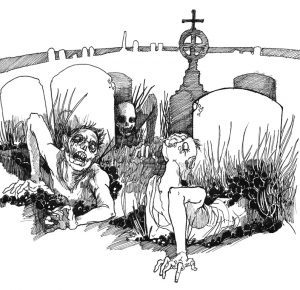 Your one-stop shop for literary apocalypse needs, Apocalypse Guys, is hosting my piece on dealing with zombie attacks on Halloween:
Your one-stop shop for literary apocalypse needs, Apocalypse Guys, is hosting my piece on dealing with zombie attacks on Halloween:
For children, Halloween ranks right up there with Christmas as the best time of year. For the informed adult concerned about the coming Zombie Apocalypse, Halloween can be a definite gut check. It doesn’t mean, however, that you have to dread it entirely; costumes, free candy, and parties are celebrations of life and a thumbing-of-the-nose at grim death. As such, you should have fun: take the kids out trick-or-treating. Throw a party. Dress up as Batman. Just keep a few things in mind that will maximize your personal security.
With less than ten days left before Halloween, now’s the time to arm yourself with the knowledge you need to get through this most perilous of holidays, supernaturally-speaking.







October 18, 2018
Movie Review: Gosnell
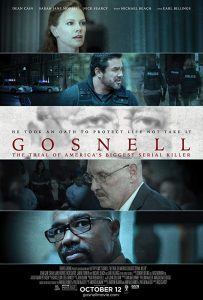 One of my concerns with conservative culture outlets is that they tend to grade on a curve. We need to support right-leaning content creators, conservatives say. I’m all for that, but I’m not going to recommend substandard work, no matter who’s writing it or why. If you get on the field, you have to compete with the big boys, whether you’re left, right, or somewhere in the middle.
One of my concerns with conservative culture outlets is that they tend to grade on a curve. We need to support right-leaning content creators, conservatives say. I’m all for that, but I’m not going to recommend substandard work, no matter who’s writing it or why. If you get on the field, you have to compete with the big boys, whether you’re left, right, or somewhere in the middle.
Last week, my wife and I went to see the movie Gosnell: The Trial of America’s Biggest Serial Killer. Written by and directed by Nick Searcy, it stars Searcy, Dean Cain, Sarah Jane Morris, and Earl Billings. The film tells the horrific story of abortionist Kermit Gosnell, who murdered babies born alive during abortions by cutting their spinal cords with scissors (called “snipping”), and was responsible for the death of at least one adult patient. If that sounds awful, it gets a whole lot worse; there’s no way to describe what went on in his disgusting clinic without wanting to vomit.
And yet the movie goes there.
Based on the book Gosnell: The Untold Story of America’s Most Prolific Serial Killer by producers Ann McElhinney and Phelim McAleer, Gosnell the movie is graphic, but not lurid: Kermit Gosnell’s clinic is a cramped house of horrors littered with red medical waste bags, garbage, food detritus, and cat shit. The refrigerator is full of jars of severed babies’ feet. White patients got the upstairs exam room because it was less trash-filled than the downstairs exam rooms. Details like that, combined with deeply disturbing scenes in the grand jury and trial courtrooms, gave the film a disquietingly realistic feel.
But is it a good movie? Or is it just a good conservative movie?
It’s a good movie.
Deliberately patterned after the Law & Order structure, the first third or so focuses on police work: discovering Gosnell’s crimes, collecting evidence, and making an arrest. This is where Dean Cain shines, even though they didn’t give his character a whole lot to do other than react; he didn’t wrestle with any moral dilemmas, didn’t change from a pro-choicer to a pro-lifer or anything of the sort. His partner, played by Alfonzo Rachel, also did fine with little to work with. Sarah Jane Morris as assistant district attorney Alexis McGuire had the best role and did the most with it, particularly during the trial phase: as the mother of five children, including a baby boy, her character anchors the viewer to the subject matter, as horrific as it is. Earl Billings’s portrayal of Gosnell’s bizarre bonhomie was both sickening and eerie; unlike Hannibal Lecter, this was a real person who committed real crimes, and after this performance I doubt Billings will ever be able to do Aflac commercials again. Nick Searcy played the villainous defense attorney with typical panache, making up for his appearance in the execrable The Shape of Water.
As director, Searcy did a masterful job: the film moved briskly, building up to an absolutely wrenching climax during the trial. He wrung terrific performances from even minor characters, particularly the clinic nurse who, at long last, finally began to suffer pangs of conscience. Janine Turner’s portrayal of Dr. North, an abortionist put on the stand to testify on Gosnell’s behalf, was extremely hard to watch, which was the whole point.
In fact, the entire movie was hard to watch, and I experienced a great deal of it as a stomach-knotting squirm that did not let up until the end credits, and even then it wasn’t over: the filmmakers displayed real-life photos of Gosnell’s clinic and equipment during the titles. How could you hear the testimony of the clinic nurses describing the death of patient Karnamaya Mongar and not be moved? Or the death of Baby Boy A?
Luke Y. Thompson of Forbes dismissed the movie as “A feature-length Law & Order for conservative Christians.” So it’s safe to say that he wasn’t moved except to sneering contempt. I’m not a conservative Christian.
Michael Rechtshaffen of Los Angeles Times called Gosnell “sanctimonious,” even as he sanctimoniously dings executive producer Ann McElhinney for making “a documentary examining ‘global warming hysteria’”. He wasn’t moved, either.
At the time of this writing I haven’t seen any other of the larger media outfits address this film, which isn’t a surprise: it forces you to think, to examine the issue of abortion outside of protest chants and bumper sticker bromides. Who wants to do that?
I can’t promise you a rollicking good time watching Gosnell, but I can say that you’re not likely to forget it once you’ve seen it. The same people who called Brokeback Mountain “important,” “a landmark,” and a “near-masterpiece” are ignoring Gosnell, which tells you everything you need to know about them and it.
Go see it. Find a theater, buy the DVD, do something. But go see it.
(In my latest novel, The Holy Warrior and the Last Angel, several scenes took place in and around Philadelphia, including Gosnell’s clinic at 3801 Lancaster. I wrote the book long before I saw this movie.)







October 16, 2018
New Story Published: Dear Dad
 My short story Dear Dad was published in Issue 2 of the literary magazine Cinder Quarterly, and you can get it here on Amazon. It’s arguably my strangest work yet, and serves as a prequel to the story The Bitterness of Honey in the anthology Appalling Stories: 13 Tales of Social Injustice. Don’t let the weirdness turn you off; it’s a solid, fun piece of work that stands on its own. Let me prove it with this excerpt:
My short story Dear Dad was published in Issue 2 of the literary magazine Cinder Quarterly, and you can get it here on Amazon. It’s arguably my strangest work yet, and serves as a prequel to the story The Bitterness of Honey in the anthology Appalling Stories: 13 Tales of Social Injustice. Don’t let the weirdness turn you off; it’s a solid, fun piece of work that stands on its own. Let me prove it with this excerpt:
Dear Dad:
That’s how you’re supposed to start a letter, right? With “dear.” Even though we haven’t been dear to each other since you kicked me out of the house. No, I’m not writing to rehash the same old shit, so you can keep reading. I know you thought you had good reasons for throwing me out. You and Mom. Maybe I’d’ve done the same thing in your position. I don’t know. I mean, I doubt it, because who puts his only son out on the street for flunking out of college? Other than you. Anyway, lately I’ve been doing some real thinking about this, and I get it now. You were testing me. Putting ice down the garbage disposal to sharpen the blades.
Well, guess what? It worked. You and your MAGA hat-wearing buddies bitch and moan all the time about millennials being weak, entitled, and lazy. Not me. Not anymore. Your snowflake millennial son’s responsible for the end of the whole world. How’s that for accomplishment, you asshole?
Sorry. It just slipped out. Amazing how the same cycles of behavior repeat themselves over and over. You harangue me, I call you names, you tell me to get out, I leave. I guess that’s why they’re called cycles of behavior instead of lines of behavior.
I won’t bother going over the old stuff, before I moved out of state. I’ve been Facebook-stalking Mom’s account, so I know that my “friends” were keeping tabs on me, telling her (and you) what I’ve been doing. I can’t let you know where I am now for reasons that’ll become clear soon, but I can say that I moved to Madison, Wisconsin a year and a half ago. Yes, the liberal paradise, where everyone drives a Prius and has tattoos and calls each other “zhe” and “xher.” Or, at least, that’s how you see it. You’d be surprised at how strait-laced it actually is, especially for a college town.
And now, you better be sitting down for this: I was working for…Greenpeace.
Ha! I’ll bet your face went all white. I wasn’t blocking Japanese ships from harpooning whales or anything like that. I was a canvasser. I walked around the suburbs with a clipboard and a partner and a credit card reader, asking for donations from decent people to keep not-decent people like you from fucking up the one planet we have to live on. As it turns out this was not only a gigantic waste of time, but actually contributed to the end of civilization, but I didn’t know that then. Unlike you, I was trying to make a difference, not a profit.
It’s a tasty blend of science fiction, horror, and environmentalism wrapped in a page-turning narrative crust, and you can get it, plus several other stories from some truly talented writers, for less than $2.00!







October 12, 2018
My Big, Fat…Armageddon Sale!
To celebrate the long-awaited release of The Holy Warrior and the Last Angel, the third book in my Armageddon series, Amazon has lowered the price of the first two books to $0.99 each!
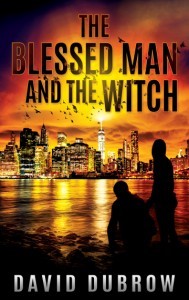 The first book of the series, The Blessed Man and the Witch, depicts the return of the world to a Time of Miracles, where stigmata-stricken psychics, hapless occultists, and unwitting innocents are used as proxies for the final war between Heaven and Hell:
The first book of the series, The Blessed Man and the Witch, depicts the return of the world to a Time of Miracles, where stigmata-stricken psychics, hapless occultists, and unwitting innocents are used as proxies for the final war between Heaven and Hell:
How can you possibly prepare for the end of the world? The end of everything? Armageddon is right around the corner, and there’s no guarantee that Heaven’s going to be the victor. Hell is real, it’s clawing at the edges of the Pit, and its demonically possessed servants are right now gathering powerful artifacts as weapons of war. The End Times are coming. Are you ready?
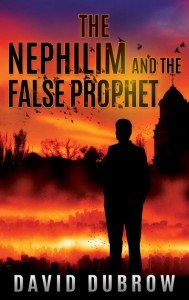 In the second book, The Nephilim and the False Prophet, Hell’s plans for winning Armageddon bear horrific fruit, harrowing the Earth:
In the second book, The Nephilim and the False Prophet, Hell’s plans for winning Armageddon bear horrific fruit, harrowing the Earth:
Fueled by brutal, random violence and a worldwide leprosy epidemic, the world descends into chaos. Preparing for Armageddon, Hell plans an atrocity called The Slaughter of the Innocents while Heaven’s scattered agents fight a cold war against superstar evangelist Kyle Loubet, who they believe is the False Prophet foretold in the Bible. The Eremites walk the Earth: black magicians kept alive through unholy relics. Terrible visions assail the world’s remaining psychics, promising an eternal night of blood and fire and endless agony. Caught in the middle, Hector, Ozzie, and Siobhan face terrible dangers from all sides. Now free from their infernal prison, what are the Watcher angels planning? With only days before the Apocalypse, can humanity be saved?
That’s three full-length novels of gripping, Biblical horror for less than $5.00. A steal!
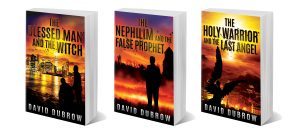







October 10, 2018
The Holy Warrior and the Last Angel Is Live!
I can hardly believe it myself, folks, but the conclusion to the Armageddon trilogy is here! The world ends not with a whimper, but a bang, and you can read all about it:
Armageddon is now. Demons have risen from the Pit to inflict torment, despair, and death throughout the world. The Watchers’ Ark has taken uncounted millions of people away, but is it a life-saving Utopia, or just another Hell?
While Hector the Blessed Man fights malevolent Nephilim outside of Creation itself, Ozzie finds himself outnumbered by ravening hordes of demons on Earth. Kyle, the Herald of Armageddon, discovers that being a true Prophet of the Lord is a burden far more terrible than he could have imagined, stretching his faith to the breaking point.
As Hell destroys every last good thing on Earth, where are the angels? Who can save us from eternal damnation when even Heaven is threatened?
Concluding the epic story of the end of the world that began with The Blessed Man and the Witch and continued in The Nephilim and the False Prophet, The Holy Warrior and the Last Angel is a novel that will appeal to fans of William Peter Blatty’s The Exorcist, David Seltzer’s The Omen, and Thomas F. Monteleone’s The Blood of the Lamb.
Years in the making, The Holy Warrior and the Last Angel draws everything to a close. Is there hope, love, or faith in God to be found at the end of the world? Will anyone survive? Click to find out!











